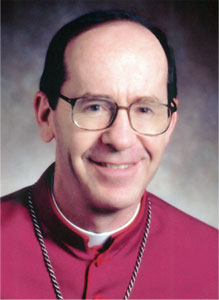The news aggregator site and pro-Medjugorje wind machine Ministry Values, which does not claim to be a Catholic site, presented a story today with the byline of Stephen Ryan and the headline “Vatican Hammers Conservative Catholic Bloggers”, about lay Catholics using their Internet writings to prod Church officials for reform. It also presented some cautionary words from other sources, including remarks by Abp. Celli from the Pontifical Council on Social Communications.
But while “author” Stephen Ryan was quoting a Vatican official about the ethics of social communications, he showed his own distinctive Internet-based writing technique, which could be summed up in the words “copy and paste”.
Paragraph 1 of Ryan’s story is copied from an AP story:
http://dailyme.com/story/2011012400000064/pope-catholics-online-hits.html (para. 5)
Paragraph 2 is from a column by Fr. James Martin, SJ, in America magazine:
http://www.americamagazine.org/blog/entry.cfm?entry_id=3447 (para. 1)
Paragraph 3 is taken from another AP story, with some added words:
http://www.foxnews.com/us/2010/10/25/catholic-bloggers-aim-purge-dissenters/ (para. 1-2)
Further material comes from this AP story:
http://www.valleynewslive.com/Global/story.asp?S=13894385
If you use scissors and paste, and cobble together a web page from other people’s copied words, without attribution, is it ethical?
[UPDATE: 1/25: Creative Minority Report has responded to the same dodgy article. The CMR piece and the ensuing comments produced an amazing display of upset on Mr. Ryan’s part, to the point where he indicated a wish to punch me in the nose! Poor man! Perhaps that falls into the category of “bad fruits of Medjugorje”.]
Bp. Schneider: Toward a correct reading of Vatican II
A few days ago, columnist Sandro Magister reported on a conference talk given in Rome in December, in which the patristic theologian Bishop Athanasius Schneider proposed a way to promote the Holy Father’s “hermeneutic of continuity”: a papal document to correct erroneous interpretations of the documents of Vatican II, and clarify the intentions of the Council Fathers and Popes Paul VI and John XXIII.
Here’s a thumbnail summary of the talk:
Expounding a key passage from Sacrosanctum Concilium, Bp. Schneider develops seven essential points for building a true theology of pastoral care, in seven duties:
1. to proclaim the Gospel to all non-believers
2. to proclaim the faith to the faithful
3. to preach repentance to the faithful
4. to prepare the faithful for the sacraments
5. to teach the faithful all the commandments of God
6. to promote the apostolate of the lay faithful
7. to promote the vocation of all to holiness
This, the Bishop declares, is the real spirit (mens) of the Council and the real purpose of the Council, and rooted in the Church’s perennial tradition. He supports this theme with extensive quotations from the speeches of Pope Paul VI and Pope John XXIII at the Council.
He goes on to discuss modern errors (liberation theology, liturgical distortions), and suggest two needs in the Church to bring about reform:
- a document from the Pope to present authoritative interpretations of the Council, in continuity with tradition, and against theories of rupture between the Council and the Tradition
- courageous pastors who will carry out the pastoral mission defined by the Council.
I’ve translated the full text, which follows.
More work for Donal Foley
In 2006, religion writer Donal Foley published his book, Understanding Medjugorje; Heavenly Visions or Religious Illusion?. Since then, it’s been the leading critical book on this subject in the English language, praised by experts in the field of Mariology, and in the past five years, nobody on the pro-apparition side has been able to find any substantial faults with it. And with reason: it’s well-researched, prudent in its conclusions, and focuses on critical source materials generally neglected by the naive books of writers who don’t know better.
A few weeks ago, some graduate student at CUA posted a blog article against Foley’s book, thinking he’d offered a very scholarly critique, but it just amounted to an opinionated, unsubstantiated rant. God help the poor kid if he submits such horrible prose to his professors. Anyway, Foley has published a response — and you can find a link to the critique from there.
I suppose it must be a bother for Foley: as a sometime apologetics writer, I know that defending a position from cheap attacks is more work for the defender than it is for the attacker. But at least the experience will give Foley, who is preparing the second edition of his book, some new insight as to what is needed in order to correct the lingering confusion of Medjugorje diehards.
“The prophetic role of Mary in apparitions”
Here’s a translation project I’ve had in the works for a few months, an excerpt from Prof. Manfred Hauke’s “Introduction to Mariology” (Introduzione alla Mariologia). This chapter presents an overview of theology, pastoral principles, and history regarding Marian apparitions.
Thanks to Fr. Hauke and to EUPress FTL for permission to publish this excerpt.
Episcopal spine alert!
 To borrow a term from Mark Shea, an “episcopal spine alert” is the event that happens when a local bishop stands up for authentic faith and morals, or otherwise shows evidence that he has a functioning backbone.
To borrow a term from Mark Shea, an “episcopal spine alert” is the event that happens when a local bishop stands up for authentic faith and morals, or otherwise shows evidence that he has a functioning backbone.
This time, Bp. Thomas Olmsted of Phoenix has warned a supposedly Catholic hospital company that their St. Joseph Hospital will lose its status as a recognized Catholic hospital if they do not acknowledge that they were wrong to let an abortion be performed there a few months ago. His letter, well-reasoned and showing his patience in what is apparently a long-running series of disputes, insists that the hospital accept ethics training for staff, or face canonical action next week.
